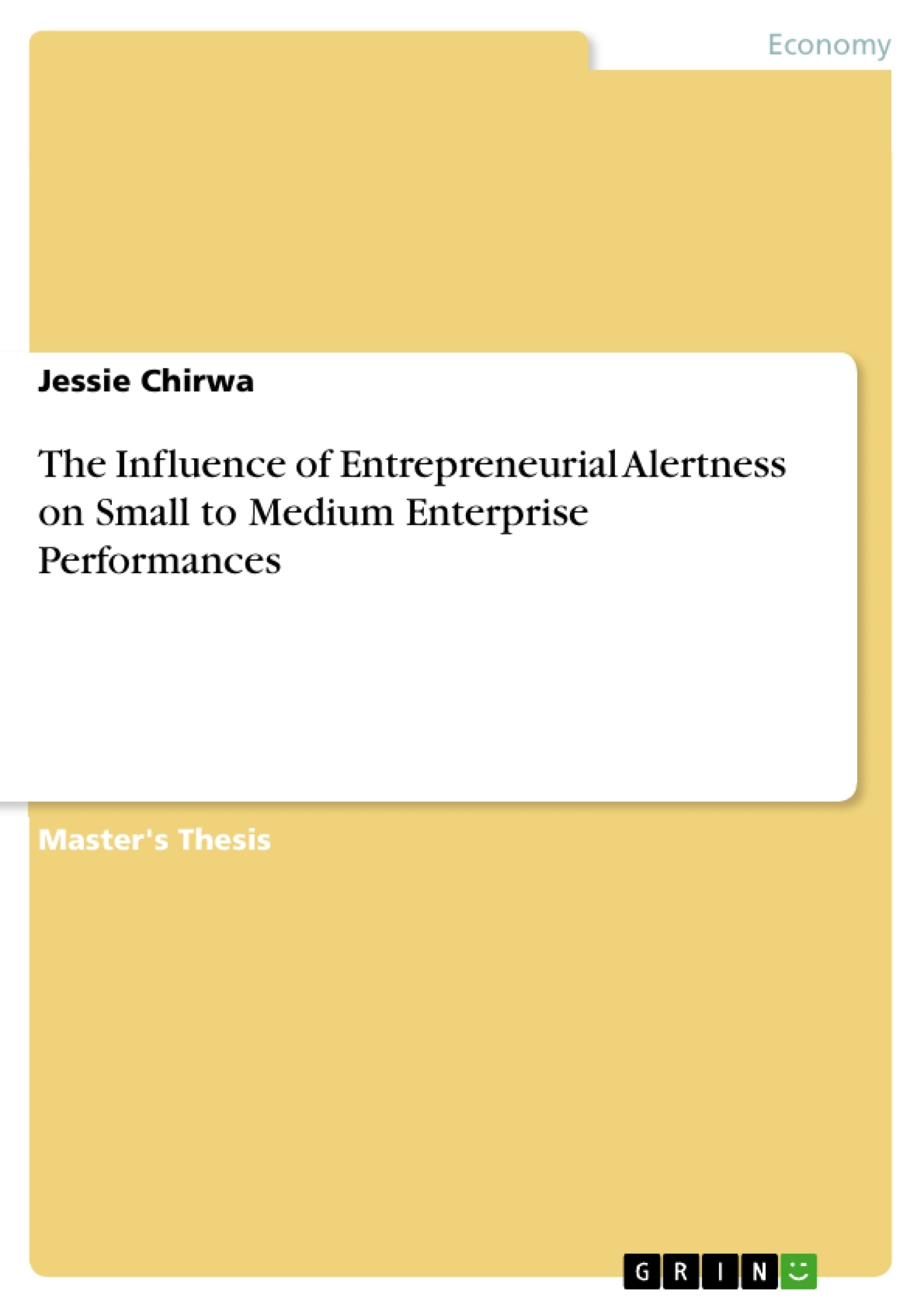This study explores and examines the influence of Entrepreneurial Alertness (EA) on Small to Medium Enterprises (SME) performance within the Central Business District (CBD) of Lusaka. The study participants included 152 entrepreneurs who own SMEs represented by 44.7% females and 55.3% males. The purpose of the study was to investigate the influence that the EA construct has on SME performance, the association between the first order latent constructs, and to determine which roles of EA in venture performance were appropriate to the participants.
A cross-sectional survey was created using Qualtrics online survey software and sent through email and what’s app to SME’s whose contact details were provided by the Zambia Development Agency. The construct of EA was examined using a 13-point scale. Descriptive statistics were conducted in Statistical Package for the Social Sciences (SPSS) software. Confirmatory Factor Analysis (CFA) was performed in Amos SPSS to verify the factor structure of the observed variables and to ascertain the validity, and reliability of the measuring instrument. The influence of EA on SME performance and association between the first-order latent variables with performance were tested using multivariate Structural Equation Modeling (SEM).
The study found that the construct of EA has a positive and significant influence on SME performance. As regards the association between the first-order latent constructs (i.e., dimensions) and performance, this study demonstrated that only the evaluation and judgment latent construct (dimension) had a significant and positive association. Finally, the study determined that EA appears to be important when a company considers entering a foreign market as a strategy for market development, and EA has a direct impact on strategic change decisions and organizational performance. The study has implications for education, commerce, and industrial policymakers. Policy initiatives could influence training curriculum and capacity-building programs that promote EA to increase entrepreneurial opportunity identifications for increased national performance and contribution.
Inhaltsverzeichnis (Table of Contents)
- Abstract
- Acknowledgements or Preface of Acknowledgements
- List of Tables
- List of Figures, Maps and Illustrations
- Chapter 1: Introduction
- 1.1 Background of the Study
- 1.2 Statement of the Problem
- 1.3 Purpose of the Study
- 1.4 Research Questions
- 1.5 Significance of the Study
- 1.6 Scope and Delimitation of the Study
- 1.7 Organization of the Study
- Chapter 2: Literature Review
- 2.1 Entrepreneurial Alertness
- 2.2 SME Performance
- 2.3 Theoretical Framework
- 2.4 Conceptual Framework
- 2.5 Hypothesis Development
- Chapter 3: Research Methodology
- 3.1 Research Design
- 3.2 Population and Sample
- 3.3 Sampling Techniques
- 3.4 Data Collection Methods
- 3.5 Data Analysis Techniques
- Chapter 4: Data Analysis and Results
- 4.1 Descriptive Statistics
- 4.2 Confirmatory Factor Analysis
- 4.3 Structural Equation Modeling (SEM)
- Chapter 5: Discussion
- Chapter 6: Conclusion and Recommendations
Zielsetzung und Themenschwerpunkte (Objectives and Key Themes)
This study investigates the influence of Entrepreneurial Alertness (EA) on the performance of Small to Medium Enterprises (SMEs) in Lusaka's Central Business District (CBD). The study aims to understand the impact of EA on SME performance, the relationship between its components, and the specific roles of EA in venture performance.
- The influence of Entrepreneurial Alertness (EA) on SME performance.
- The association between the components of Entrepreneurial Alertness and SME performance.
- The specific roles of Entrepreneurial Alertness in venture performance.
- The implications of the findings for education, commerce, and industrial policymakers.
- The potential for future research to delve deeper into specific industries and expand the sample size.
Zusammenfassung der Kapitel (Chapter Summaries)
- Chapter 1: Introduction provides an overview of the research topic, outlining the background, problem statement, purpose, research questions, significance, scope, and organization of the study. It sets the stage for the investigation into the relationship between Entrepreneurial Alertness and SME performance.
- Chapter 2: Literature Review delves into existing research on Entrepreneurial Alertness, SME performance, and the theoretical and conceptual frameworks underpinning the study. It lays out the foundation for the hypotheses that will be tested in subsequent chapters.
- Chapter 3: Research Methodology describes the research design, population and sample selection, data collection methods, and data analysis techniques employed in the study. It provides a detailed account of the approach used to collect and analyze data related to Entrepreneurial Alertness and SME performance.
- Chapter 4: Data Analysis and Results presents the results of the statistical analyses, including descriptive statistics, confirmatory factor analysis, and structural equation modeling. This chapter reveals the findings regarding the influence of Entrepreneurial Alertness on SME performance and the association between its components.
- Chapter 5: Discussion interprets the findings of the study in the context of existing literature and theory. It analyzes the significance of the results and their implications for understanding the relationship between Entrepreneurial Alertness and SME performance.
Schlüsselwörter (Keywords)
The main keywords and focus topics of the study include Entrepreneurial Alertness, Business Performance, SMEs, and Opportunities. The research explores the influence of entrepreneurial alertness on the performance of small and medium enterprises, highlighting the identification and exploitation of opportunities as key drivers of success.
- Citar trabajo
- Jessie Chirwa (Autor), 2023, The Influence of Entrepreneurial Alertness on Small to Medium Enterprise Performances, Múnich, GRIN Verlag, https://www.grin.com/document/1336097




